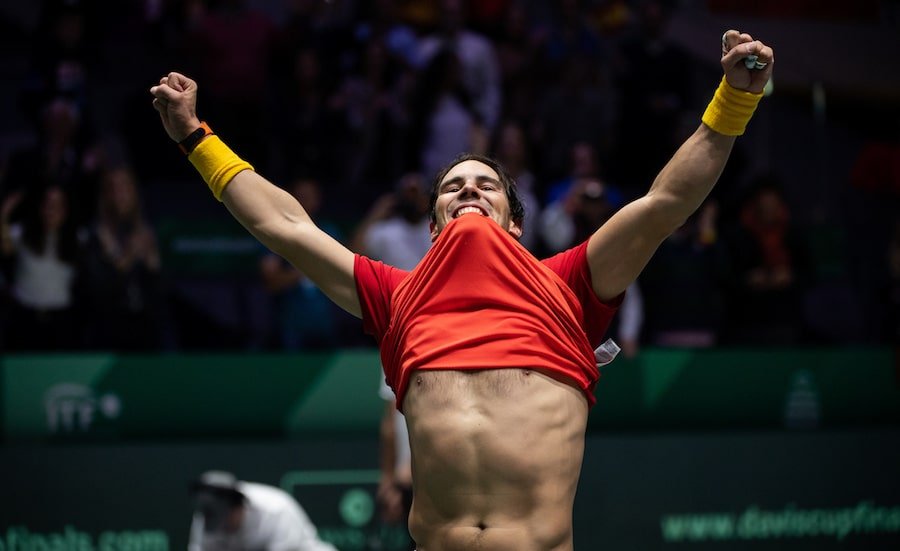
Davis Cup opinion: Tennis governing bodies need to work for the common good
The creation of three new team events, including the new format Davis Cup, to be played in the space of five months is symptomatic of a wider problem, says tennishead’s Stephen Towers
If ever there was a time that demonstrated how international tennis would benefit from having one governing body, this has surely been it. The 2019 season has ended with a succesful new-look finale to the Davis Cup in Madrid in November, while the 2020 campaign will open just a few weeks from now with another men’s team event played in Australia. Meanwhile an opportunity to create something special by combining the Davis Cup Finals with its Fed Cup equivalent has been missed, with the women heading instead to Budapest next April to compete on clay.
From a position where the merit of team competitions in the calendar was being called into serious question, we have seen the creation of three new-look team events to be staged in three different countries within the space of five months. Where is the sense in that? It remains to be seen, moreover, what commitment the players will make to the new competitions, with Simona Halep the latest to throw a spanner in the works by saying that she would not want to play in a Fed Cup which did not feature home-and-away ties.
With tennis effectively run by seven different international governing bodies – the Association of Tennis Professionals, the Women’s Tennis Association, the International Tennis Federation and the four Grand Slam tournaments – conflicts of interest have always existed, but in recent times the divisions seem to have deepened.
The ATP and the ITF appeared to be involved in a head-to-head race to become the first to put together a new men’s team event. Even within the ITF there has been some scepticism about the Davis Cup Finals, with question marks over its finances and critics unhappy about the loss of the home-and-away format, while there are also holes to be picked in the new ATP Cup, which will kick off the 2020 season.
One obvious weakness in the ATP Cup is the varying strengths of different countries. Teams can have between three and five members, so where does that leave someone like Stefanos Tsitsipas, the only male Greek singles player ranked in the world’s top 400? Similarly, what about players like Jo-Wilfried Tsonga, Richard Gasquet and Adrian Mannarino, who on recent world rankings were not among the top five French singles players?
Besides, with 18 of the world’s leading nations having competed at the Davis Cup Finals in November, what appetite will there be for a men’s team event featuring 24 countries less than two months later? You also wonder if the players competing in the ATP Cup will be more interested in getting their games in shape for the upcoming Australian Open than in winning a competition which lacks the history of the Davis Cup.
Meanwhile the new-look Fed Cup Finals will see 20 countries compete in a week-long women’s team competition on indoor clay courts in Budapest in April. While the expansion of the elite group is to be welcomed, was this not a chance to create something special by combining the Fed Cup with the Davis Cup at a single venue? Such an event, particularly if scheduled at the end of the year, could have been a spectacular celebration of team tennis.
Philip Brook, the outgoing chairman of Wimbledon, believes that tennis needs “more goodwill” between the governing bodies and would like to see the sport’s calendar, world rankings and rules decided collectively. It is an admirable goal, yet there are areas in which not even the Grand Slam tournaments can make joint decisions. For example, different systems are in operation at each of the four tournaments this year to decide final sets: first-to-10-points tie-breaks at 6-6 in Melbourne, traditional advantage sets in Paris, first-to-seven-points tie-breaks at 12-12 at Wimbledon and first-to-seven-points tie-breaks at 6-6 in New York. How confusing is that?
On-court coaching is another area in which not even the Grand Slam tournaments can agree. While Wimbledon remains firmly opposed to on-court coaching, the US Open allows players in the junior and qualifying competitions to talk to their coaches at the side of the court.
There are, nevertheless, areas in which the governing bodies come together – and the results of such co-operation are usually to the benefit of all concerned. The Tennis Integrity Unit, for example, has been doing excellent work in the fight against corruption. We are no doubt too far down the road for the governing bodies ever to consider sacrificing all their autonomy for the common good, but the TIU shows what can be done if everyone has a commitment to working together.
Keep up to date with all the action at our tennis news section. Win amazing tennis prizes by entering our competitions. Learn more about your favourite players including Roger Federer, Rafa Nadal and Novak Djokovic. Check out the latest kit in our tennis gear reviews. Receive regular updates with our legendary newsletter or read in depth features with stunning photography in tennishead magazine. Can’t visit the tournaments you love? Check out our guide on how to watch tennis on TV. Don’t miss a thing with our Live Scores service. Follow tennishead on social media at Facebook, Twitter, Instagram & YouTube
Photo credit Paul Zimmer


